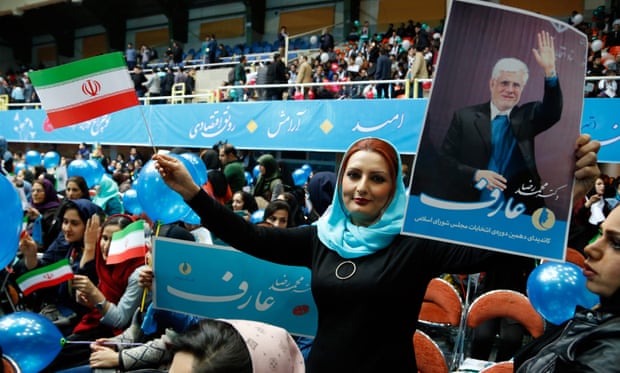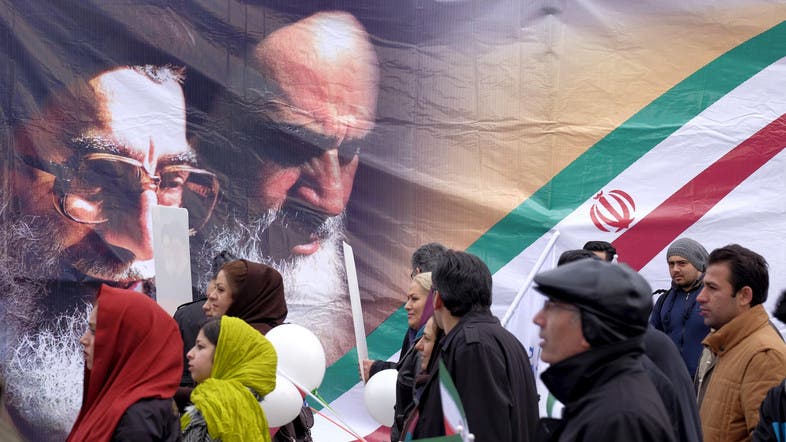By Maha Hamdan.
Observers who portrayed the elections as a battle between ‘reformists’ and ‘hardliners’ have tied themselves in knots – especially after reporting earlier that nearly all reformists had been disqualified by the watchdog Guardian Council
Gareth Smyth for The Guardian
1- The primary divide is now between supporters and opponents of the nuclear agreement
Last July’s agreement with world powers brought a realignment in Iranian politics. The central divide in the election was between supporters and opponents of the deal.
The ‘principle-ist’ Ali Larijani as parliamentary speaker was an effective ally of President Hassan Rouhani. Larijani headed off critics of the deal in a level of co-operation between parliament and government not seen during the presidency of Ahmadinejad and the latter years of Khatami. During the election, public support offered to Larijani as candidate in Qom by General Qassem Soleimani, chief of the Revolutionary Guards overseas al-Quds brigade, reflected broad backing in the political elite behind the nuclear agreement.
This agreement was not consigned to history when signed. Implementation is to last over the next nine years – both in limiting Iran’s nuclear programme and in removing United Nations, European Union and most United States sanctions. This suggests the agreement will continue to shape Iranian politics, even if less strongly over time.
2- Iranian politics cannot be reduced to ‘reformists’ versus ‘hardliners’
Iran is a large country – bigger than Iraq, Turkey and Syria combined – and every Iranian election throws up a complex mix of regional, tribal and local factors. Voters have many reasons for voting as they do. The single biggest issue in most elections in most countries is the economy – but this is a catch-all than can lump together jobs, prices, housing and urgent environmental issues like water management.
The generalisations of ‘left’ versus ‘right’ of the 1980s, and ‘reformists’ versus ‘conservatives’ of the 1990s – however well they applied at the time – no longer work. Observers who portrayed the elections as between ‘reformists’ and ‘hardliners’ have tied themselves in knots – as shown in reports that ‘reformists’ and ‘moderates’ had all been disqualified followed by reports they had won the election.
3- The succession to Ayatollah Khamenei as leader looks remarkably open
With the defeat of Ayatollah Mohammad Yazdi in the Experts Assembly election, the assembly will need a new chairman. The assembly will remain an opaque body, but whoever fills the post (as well as the conduct of his election) will be the next clue as to how the succession to Khamenei will proceed.
The defeat in Tehran not just of Yazdi but also of Ayatollahs Mohammad Taqi Mesbah-Yazdi and Ahmad Jannati represents a serious blow to the senior clerics most alarmed by Rouhani and the prospect of better relations with the west. But the views of less vocal Assembly members elected round the country may be less clear-cut than those trumpeted on the noisy hustings in Tehran. Further surprises lie ahead.
4 – Hassan Rouhani is a capable politician, if no reformist
Iran’s president has proved himself an astute, hard-headed operator. He not only carried the bulk of the political class behind the nuclear agreement, he has again won electoral endorsement for his pragmatic conservatism. His politics are based on efforts to improve relations with other countries, including the United States; reform of the economy to boost the private sector and attract foreign investment; and some easing of press controls and morality policing.
Rouhani’s instincts and temperament do not favour exciting opinion leaders – especially the urban middle-classes and students – behind a programme of change. He is well aware that the Khatami era and the street protests after the disputed 2009 election opened up bitter divisions within the political class: his approach is based rather on incremental change and building agreement.
5 – Change comes dripping slowly …
Economic reform to encourage sustainable growth – increasing employment and improving living standards – will challenge vested interests, including those that have benefited from the closed economy encouraged by sanctions and an ideology of ‘resistance’. Rouhani will prefer reassurance to confrontation and will pick battles carefully.
Internationally, the region looks dangerous, and these are troubled times with unprecedented tensions between Sunnis and Shia. This creates a tricky balance of keeping Iran ‘strong’ while also improving relations with both the US – even as a presidential election draws nearer – and an increasingly assertive Saudi Arabia.
Politically, Rouhani will need to maintain public support with an eye to being re-elected as president next year. Anecdotal reports of a lower turn-out in poorer parts of Tehran may reflect most strongly a wider sense among Iranians they are not benefiting from the easing of sanctions. In terms of the political class, Rouhani will need to reassure conservatives that cautious change continues to be in the interests of the Islamic Republic, while also offering reformists some concessions over political prisoners and censorship.








